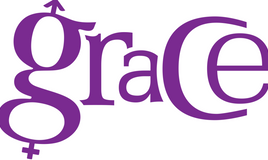More or less gender equality in the european union in the last 10 years?

Did you know that the European Union has its own Gender Equality Index since 2013? The updated and improved version of the Index will be presented tomorrow June 25th during an official launch conference in Brussels. Has gender equality in the European Union (EU) progressed since 2005? Follow the conference via live streaming and find out.
Gender Equality Index specifically tailored towards the policy framework of the EU
EIGE, the European Institute for Gender Equality launched the Gender Equality Index in 2013. The Gender Equality Index measures gaps between men and women at EU level and within the Member States on core domains such as work, money, knowledge, time, power and health.
The EIGE Gender Equality Index is adapted to the context of the EU and is based on EU policy priorities. It was initiated by the European Commission. Equality between men and women is a fundamental value of the EU, enshrined in its treaties and in the Charter of Fundamental Rights of the EU. Still, fact is that the European Union is only half way towards a gender-equal society. As the Gender Equality Index 2013 revealed.
Innovations in Gender Equality Index 2015
The Gender Equality Index 2015 sounds promising. EIGE already announced the following innovations in the Gender Equality Index:
- Updated methodology for the domain of work with the introduction of new variables
- EIGE developed a first composite indicator for the domain of violence against women across the EU. This domain was completely empty in 2013 because of a lack of comparable data. The results are contextualized using other relevant indicators, including attitudes surrounding the general acceptability of violence against women, awareness of incidents of violence against women within the social environment as well as the level of trust in police and justice institutions.
- The Gender Equality Index 2015 is using data of 2005, 2010 and 2012 to show progress and trends over time.
- The Gender Equality Index 2015 includes scores for Croatia, following its accession to the EU in 2013 as 28th Member State.
What’s in it for The Netherlands?
One more day and the results on the Gender Equality Index at EU level and within the Member States will be revealed. What do you think: has Gender Equality in the EU improved, decreased or stagnated? Which domain shows the most progress? Which ones are the most problematic?
Member States’ official representatives will share during the launch conference how they managed to increase scores in several of the Index’ domains. Gender Equality is indeed not self-evident. It requires continuous attention, investment and monitoring. In the Netherlands too.
Will the Netherlands move towards less or more inequalities in the division of time between men and women? Women are already twice as much involved in caring (unpaid) roles as men. With the recent reforms and budget cuts in the care sector, a greater burden is placed on volunteers for the care of the elderly or chronically ill people. The director of The Netherlands Institute for Social Research and Dutch women NGO’s warn that the extra informal care burden may disproportionately affect women. With all the consequences that it entails for women’s participation on the labour market and women’s financial situation.
Follow Catherine on twitter during the conference @catherinebdv #EIGEIndex
Catherine Bij de Vaate, former policy advisor at Atria, the Dutch institute for gender equality and women’s history.
- Live streaming and agenda of EU official launch conference (June 25th, 2015)
- Main findings EIGE Gender Equality Index 2013
- EIGE Gender Equality Index 2015




